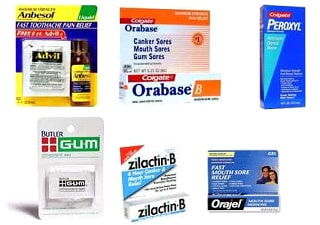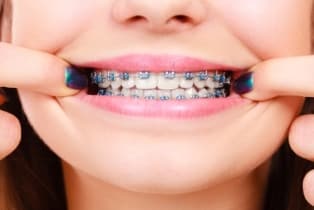Life with Braces for Daily Comfort
Brushing and flossing are more important than ever when you have braces. Proper oral hygiene helps prevent plaque buildup, gum disease, and cavities, ensuring your teeth and gums stay healthy throughout treatment. Braces make cleaning a bit trickier, so adjusting your routine is essential. Patients who do not maintain proper hygiene may need more frequent dental cleanings. If you have a history of gum disease, visiting a periodontist during treatment is recommended.
Brushing with Braces
Use a soft-bristled or bi-level toothbrush and fluoride toothpaste to brush at least twice daily, preferably after meals. Brush for at least two minutes, making sure to clean:
- The front, back, and chewing surfaces of your teeth
- Around brackets, wires, and along the gum line
- The spaces between braces where food particles can get trapped
An interdental brush or an electric toothbrush in a moderate setting can help clean around braces more effectively.
Flossing with Braces
Flossing daily is crucial, but getting floss under the archwire can be challenging. A floss threader or orthodontic floss can help guide the floss between teeth and under the wire. Slide the floss up and down the sides of each tooth and under the gumline for a thorough clean. An oral irrigator (water flosser) can also help remove debris, but it should not replace flossing.
Checking Your Cleaning Routine
To see how effective your brushing and flossing are, try using a disclosing tablet or solution. These highlight areas where plaque remains, helping you improve your technique for a cleaner, healthier smile.
Eating with Braces: What to Eat & What to Avoid
One of the most common questions we get is, “What can I eat with braces?” While you’ll be able to enjoy most of your favorite foods, some adjustments are necessary to protect your orthodontic appliances.
Safe Foods for Braces
For the first few days after getting braces or following an adjustment, stick to soft foods such as mashed potatoes, yogurt, scrambled eggs, soft pasta, smoothies, soups, soft fruits like bananas, cooked vegetables, and tender meats.
Foods to Avoid
Certain foods can damage your braces, leading to delays in treatment. Avoid:
- Chewy foods: Bagels, hard rolls, licorice, and tough pizza crust.
- Crunchy foods: Popcorn, ice, hard taco shells, granola, and crunchy cereals.
- Sticky foods: Caramel, Tootsie Rolls, taffy, Starburst, Now and Laters, Skittles, gummy bears, Sugar Daddies, and other sticky candies.
- Hard foods: Nuts, Jolly Ranchers, suckers, mints, beef jerky, and hard pretzels.
- Foods you bite into: Corn on the cob, whole apples, and raw carrots (unless cut into small pieces or shredded).
- Corn or hard chips: Doritos, Fritos, Tostitos, and hard Cheetos (Lays potato chips are okay).
Additionally, avoid non-food habits like nail-biting, chewing on pens/pencils, or using your teeth to open packages, as these can also damage your braces.
Excess sugar increases the risk of cavities, so it’s best to minimize:
- Sweet treats: Cake, ice cream, cookies, pie, and candy.
- Sugary drinks: Soda, sweetened tea, Gatorade, Kool-Aid, and other beverages high in sugar.
If consuming sugary drinks, use a straw to reduce contact with your teeth.
Managing Discomfort from Orthodontic Treatment
It’s normal to experience some discomfort as your mouth adjusts to orthodontic treatment. Fortunately, any soreness or irritation is temporary and can be managed at home.
Sore Teeth
Once your teeth start moving, they will be sore for 3-5 days. The soreness may return in 10-15 days for another few days and then subside.
We suggest taking an over-the-counter pain medication to manage discomfort:
- Take a medication such as Tylenol®, Motrin®, or Advil® (please read labels carefully before taking any medications).
- Be sure to take the medication around the clock as prescribed on the bottle for effective pain control.
Sore Tissues
Your cheeks, tongue, and lips may feel sore and raw from the new hardware. It is quite normal to get “white sores” from this irritation.
The good news? Within two to three weeks, the soft tissues will toughen up, and the irritation will go away.
You may use the orthodontic wax (given to you in your hygiene package) on the parts that feel irritating. You may also use numbing agents, such as Orajel, Anbesol and Zilactin B, to numb the tissues while healing and callusing. Any over-the-counter peroxide mouth rinse (such as Peroxyl) or a mild saltwater rinse (one teaspoon of salt in 8 ounces of warm water, 3-4 times a day) will also help the healing.
It takes 1-2 weeks before your lips, cheeks and tongue form calluses and become desensitized to the new hardware in your mouth. Please be patient; we promise that it does get easier as we go along!

Additional Orthodontic Care
In addition to regular visits, it’s essential to maintain excellent oral hygiene to support your treatment. Wearing rubber bands or other prescribed appliances consistently is key to ensuring your teeth and jaws move into their ideal positions.

Rubber Band Wear
Following Dr. Maryam Mojdehi-Barnes’ instructions for rubber bands or other appliances is crucial for keeping your treatment on track. Consistency is key—wearing them as prescribed will help you achieve a straighter smile faster.
Sports and Mouthguards
If you play sports, let us know! We’ll provide a protective orthodontic mouthguard to help prevent injuries while keeping your braces safe.
Engaging in sports offers many benefits for kids, including physical fitness and character development. However, it also carries the risk of injury, especially to the mouth and teeth, with over 3 million teeth knocked out each year in youth sports. Wearing a properly fitted mouthguard can greatly reduce these injuries. Here’s why mouthguards are essential:
- Protective Gear: Mouthguards are essential for preventing injuries in sports like football, basketball, soccer, and more.
- Custom Fit: Custom-made mouthguards after completion of orthodontic treatment provide the best protection, offering comfort and a perfect fit for your child’s mouth.
- Affordable Protection: Investing in a high-quality, custom-fitted mouthguard is cost-effective compared to the potential cost of treating a dental injury.
Whether it’s an orthodontic mouthguard, a custom-made option, or a boil-and-bite variety, ensuring your child wears a mouthguard during sports is a simple and effective way to protect their smile during and after orthodontic treatment.
By following these guidelines, you’ll ensure a smooth orthodontic journey and keep your smile healthy throughout treatment. If you have any questions or concerns, don’t hesitate to contact our office!